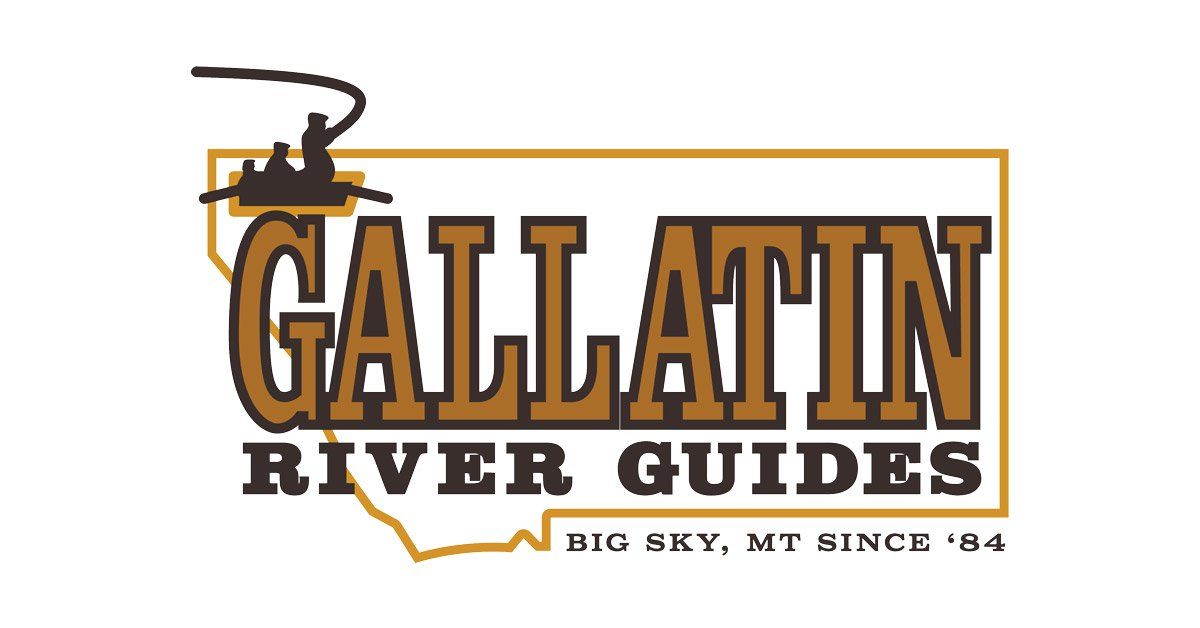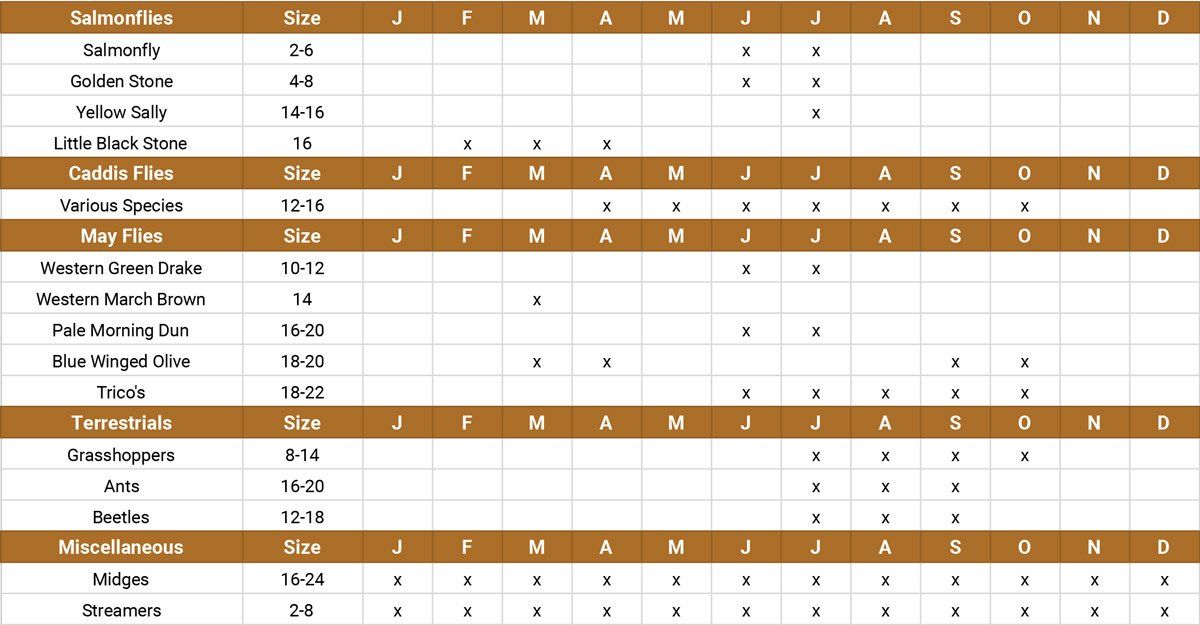Enjoy a whole day of prime fly fishing on the Madison River
Fly Fishing On The Madison River
Reel In A Trophy-Worthy Catch On The Madison
Favorite Stretch: Below Quake Lake To Ennis
Seasons: Year-round
Prime Hatches: Caddis, Salmonflies, Golden Stones, Yellow Sallies, Epeorus, Baetis, Tricos
If ever a river defined a state, the Madison could do Montana justice.
The sheer length of Madison's fishable waters is over a hundred miles. From the 60 mile stretch between Quake Lake and Ennis to the gnarly whitewater in the Beartrap Canyon, the Madison's course is the perfect spot for any enthusiastic fly fisher.
Want to experience the grandeur of the Madison River yourself?
Sections Of The Madison River
From the confluence of the Gibbon River and Firehole River near West Yellowstone to Quake Lake
This stretch begins in Yellowstone Park and flows for about 12 miles before it enters into Hebgen Lake. Be sure to check the regulations as the fishing season tends to be more limited than the general Montana season. This water typically opens to fishing in late-May. At that point hatches of BWOs and caddis will provide consistent fishing to good-sized fish. Access is easy in Yellowstone Park and for the mile or so of river in Montana before the rivers becomes Hebgen Lake. Salmonflies also provide ample food for trout, and exciting fishing for anglers, on this stretch in June.
Areas such as Baker's Hole, Barns Hole, and Seven Mile Bridge all offer a little different type of water and brand of fishing. If you want to get away from some of the crowds that fish close to the roads, park near the River Trail Trailhead in the town of West Yellowstone and hike for not quite a mile before you get to the river. It is possible someone else will wander down from the road, but the classic rule that most anglers fish within 20 minutes from the nearest road is very accurate in Yellowstone National Park.
The water from the Park Boundary, near the Highway 191 bridge and downstream is in Montana and doesn't require a YNP permit. There is not a lot of water in this stretch that is flowing before the river flows into Hebgen Lake, but what water there is meanders peacefully and provides some challenging dry fly fishing. In the height of summer the evening caddis will provide wading anglers ample fishing opportunities.
The short run of river between Hebgen and Quake, locally known as "Between the Lakes" is not known for producing high numbers of fish, but it can produce the occasional trophy, as rainbows and browns from Quake Lake will move into the river to spawn. This short stretch is wade-fishing only.
This stretch of the Madison is the famous water you hear so much about. Characterized as the 60-mile riffle, the river tumbles from the outlet of Quake Lake down to Ennis Lake. Although the water appears the same for this entire stretch, a local outfitter or guide will tell you that this is the farthest thing from the truth.
Angler fishing this stretch will find willow-lined banks, pockets created by large boulders left by the glaciers, and plenty of seams and eddy lines to drop a fly. The bottom is medium to small sized rocks and fine pebbles, creating substantial habitat for a variety of aquatic life. Combine the cold, oxygenated water with a high quantity and quality of food making this section from Quake to Ennis a world-class fishery.
Hatches of Blue Winged Olives are prolific in the spring and fall, caddis, mayflies and stoneflies dominate the fishes diets through the summer, and a hopper-nymph rig is sure to turn some fish when other hatches has subsided.
From Ennis Lake to the headwaters of the Missouri River
As mentioned above the water directly below Ennis Lake and through the Beartrap Canyon is not to be taken lightly. Yes, there are plenty of big fish in the canyon and hiking anglers can access this water by using the Beartrap Canyon Trail on the eastside of the river. The trailhead is accessed from Highway 84, between Bozeman and Norris. For intrepid anglers this is a fun hike with some great fishing, especially in April, May, and June.
For floating anglers, the water from the dam to Warm Springs access contains several rapids, the main one being the Kitchen Sink which will wreak havoc on inexperience boaters and is even a challenge for exceptional boaters. Avoid this canyon stretch unless you are floating with a hired professional.
In the canyon anglers will find fast, pocket water lined with great banks and the occasional diagonal riffle. For a truly exciting hiking and angling experience walk the Beartrap Canyon Trail just before the salmonfly hatch and fish weighted nymphs very tight to the banks. You should catch some big brown trout chowing nymphs before the main hatch. Plus be on the lookout for rattlesnakes that time of year as they are on hunt for newborn moles, mice, and other small critters.
Below the Warm Springs access, floating anglers will find several access points from here down to the headwaters near Three Forks. Nearly all of the floating occurs between Warm Springs and Graycliff access sites. Many locals and outfitters leave the water below Beartrap from July to mid-Septmber because of warm water temperatures.
Ennis Lake has filled in with sediment since the dam was built in 1900, so much that the average depth is under 9 feet. In the intense summer sun the water in the lake heats up to temperatures harmful to trout. Despite being in a canyon and the swiftness of the currents, the water below Beartrap Dam to the headwaters becomes too warm to regularly find actively feeding trout. Perhaps one day the powers-that-be will remove or divert water. If and when this ever happens, the fishing through the canyon all the way to the headwaters would be world-class.
The spring hatches of caddis and BWOs on this stretch are prolific, and there is a certain cult-following who love this piece of water in March, April, and May. Again in late September and October the BWOs hatch, not nearly as intensely as the spring, but still in strong enough numbers to provide ample dry fly fishing. With salmonflies and a very healthy population of crawfish this stretch has plenty of food for big trout and there are lots of them.
From the Black's Ford access down to Headwaters State Park, the trout numbers drop dramatically, so fish are few and far between. However, every year a few diehard anglers report brown trout in the 25-inch-plus range coming from a deep hole below Black's Ford.
Water from the Interstate 90 bridge and down to the confluence of the Jefferson and Gallatin (all three combine to make the Missouri) is a collection of braids, deep bends, and a few riffles. Floating this water requires local knowledge as the main channels change from year to year. Anglers in this stretch will find solitude and a few monstrous trout.
Tributary Streams & Rivers
The Madison is not known for having a plethora of small streams that flow into it. There are a few creeks and forks that provide an influx of flows, but nothing that offers consistent fishing on a regular basis. Anglers wishing to pursue small stream angling opportunities should inquire locally as changing water conditions and access issues make finding small stream options on the Madison an annual challenge.
Start your fly fishing adventure today and explore the montana waters with our team
Quick Links
CONTACT
Outfitter: Michael Donaldson, Montana License #36853 GRG operates under a special use permit with the Custer Gallatin National Forest and is an equal opportunity provider.



